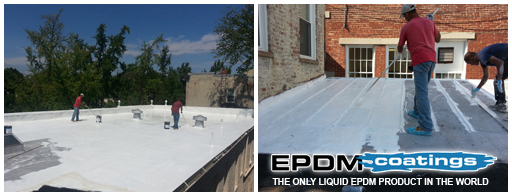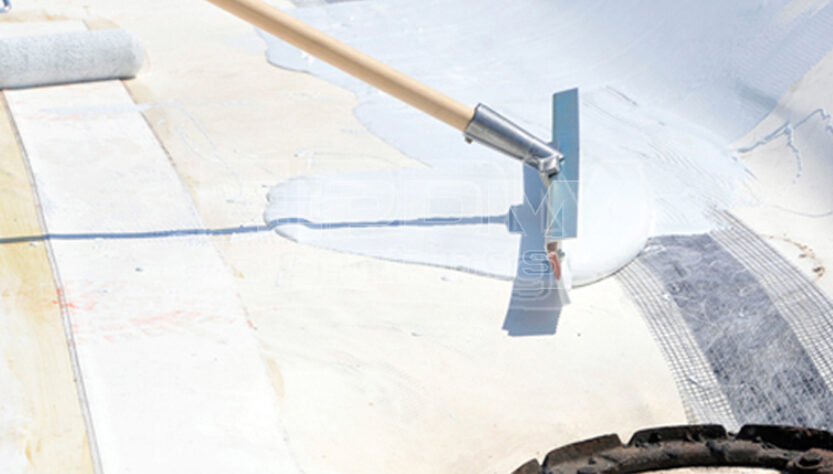Whether you’re re-roofing your business or your home, or you’re trying to find a way to create a unique fish pond without using a plastic liner, Butyl Liquid should be your material of choice. It’s easy to apply, over a 30 year history of success and is watertight when fully cured, and offers a wide range of benefits. Unlike other types of rubber, it’s even safe for fish. However, there are things you’ll need to know in order to get the most out of this material. We’ll cover some important tips below.
EPDM Rubber Installation Tips
We’ll start with installation tips to help ensure that you get a good, even coating of Butyl Liquid Rubber and that it goes on smooth and easy.
Use the Right Tools: You can use a wide range of tools to apply Butyl Rubber EPDM rubber, but two of the most commonly used and most helpful are paint rollers and sprayers. Rollers allow you to apply an even coating across a roof (or other surface) with ease. We recommend longer handles for easier application, too. Sprayers are also very convenient, particularly for very large roofs and hard to reach areas where a roller or brush might not fit very easily.
One Coat Is Enough: If you’ve spent much time painting, then you’re probably thinking that EPDM rubber will need more than one coat in order to withstand weathering and to look good. That’s usually not the case. In most situations, a single coat will be more than enough. Too many coats will add excess weight to your roof and will also adversely affect curing time.
Waterproof: While many products require curing time before they are waterproof, that is not the case with Butyl rubber. It’s actually waterproof after just a few minutes. However, don’t equate waterproof with fully cured. It will take roughly a week for the coating to completely cure in optimal temperatures and humidity ranges.
Extend the Lifespan
Once applied, you need to ensure that your EPDM rubber coating will stand the test of time. A few basic tips will help you extend its lifespan.

Maintain It: There’s very little that you need to do in the way of maintenance for Butyl rubber, but there are a few things that will help ensure you get the best longevity possible. Twice per year, you should inspect the area. Look for signs of damage or possible leaks. In most cases, minor repairs can be made by simply applying another coat of rubber over the damage. In addition to your visual inspection, you’ll need to remove debris from the area, as well. These can form dams that cause water to back up, and can even help foster mold and mildew growth.
Flashing and Edging: During your inspections, pay close attention to any flashing or edging. If these come loose or are damaged, it could lead to damage of the rubber coating. If you’re required to replace edging or flashing, make sure that the membrane is turned down over the fascia with the metal cover installed over the top.
In Conclusion
Butyl Liquid Rubber is highly durable and can be used in a very wide range of situations, from commercial roofs to waterproofing in basements. It’s economical, incredibly durable, and readily available. However, like any other product, there are things you need to know to get the most out of it. The information above will help you maximize the lifespan of your rubber application, enjoy ease of installation, and prevent leaks that might damage the substrate under the rubber coating. For more information visit us at http://www.epdmcoatings.com


